
Creative DIY Walkway Ideas to Elevate Your Outdoor Space
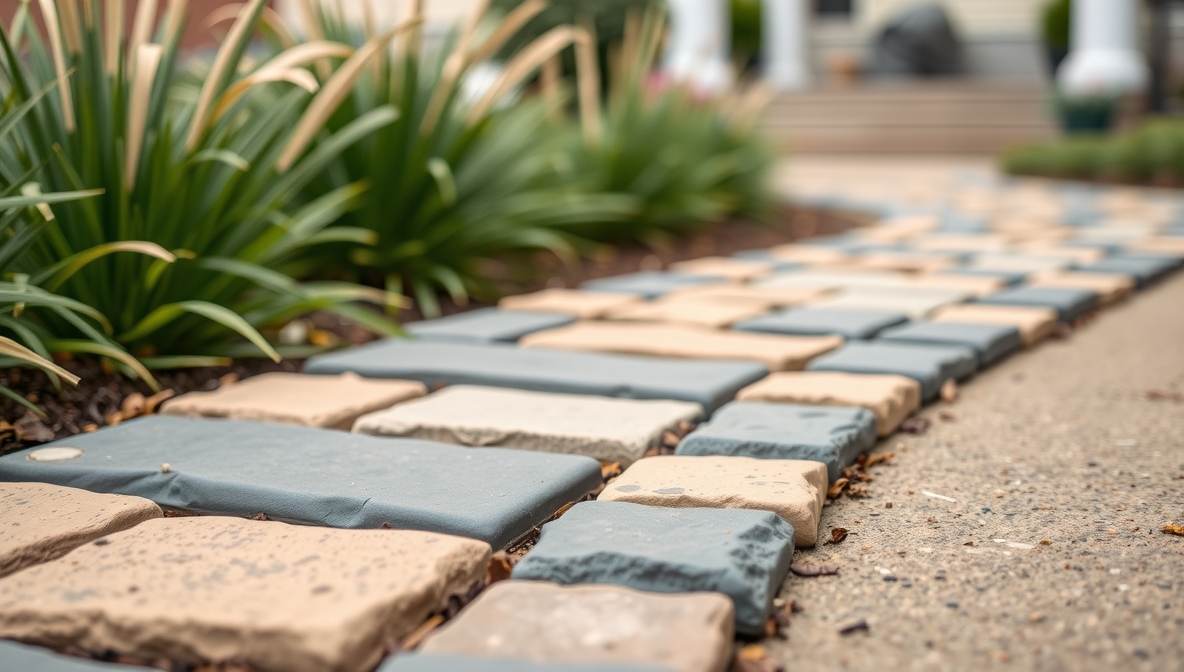
well-designed walkway does more than guide your steps—it sets the tone for your entire outdoor space. The right path can make a garden feel like a hidden retreat or give your front yard a burst of personality. Simple materials like gravel, bricks, stepping stones, or reclaimed wood can build stunning walkways without draining your budget. Each design choice adds character and charm, turning basic paths into inviting features.
Homeowners often overlook walkways while focusing on decks or patios, yet these narrow routes carry huge potential. Mixing textures, arranging patterns, or incorporating lighting can create an experience that’s both functional and beautiful. A winding stone path flanked by flowers might suggest a fairy-tale garden, while sleek pavers lined with pebbles can deliver a clean, modern aesthetic.
Anyone with a free weekend and a bit of motivation can upgrade their yard with these walkway ideas. The satisfaction of stepping back to admire something you built yourself beats hiring a crew any day. This guide offers inspiration for projects that combine ease, affordability, and lasting impact—all right under your feet
DIY Walkway Ideas: 10 Creative Paths for Your Yard
Adding a walkway can change the look and feel of your outdoor space. It also helps guide visitors safely to your door or garden. You don’t need to hire a pro to make one. With a little time and effort, you can build it yourself. These 10 DIY walkway ideas will give your yard charm and function.
1. Gravel Pathway
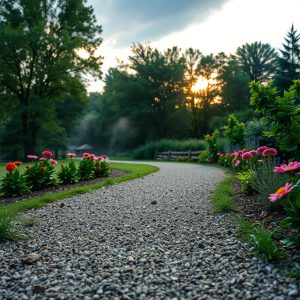
Gravel is easy to work with. It’s also budget-friendly. To build a gravel path, dig out a shallow trench. Then lay down landscape fabric to stop weeds. Pour in your gravel and level it out with a rake. You can add bricks or timber to the sides to keep the gravel in place. This type of walkway works well in gardens and between flower beds.
2. Stepping Stones
Stepping stones give a natural look. You can space them out for a light, floating style. Or you can place them closer for a solid path. Use large flat stones for better balance. Lay them on sand or soil. Then press them down until stable. Fill the gaps with grass, moss, or gravel. This type fits well in both modern and rustic yards.
3. Brick Walkway
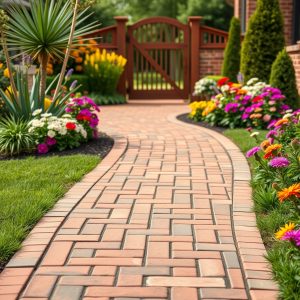
Bricks are strong and long-lasting. They also bring a classic look. Pick a pattern like herringbone or basketweave to add interest. Dig down about 4-6 inches. Add gravel, then sand. Set your bricks in the pattern you like. Tap them down with a rubber mallet. Fill the gaps with sand and sweep it over the path. A brick path looks great near porches or patios.
4. Mulch Walkway
Mulch paths are easy and soft underfoot. They are great for garden paths. Clear your route and lay down landscape fabric. Then pour on your mulch. Cedar or bark mulch works best. Add a border to hold it in place. This type of path is good for areas where water runs off fast. It soaks up rain and keeps soil in place.
5. Concrete Pavers
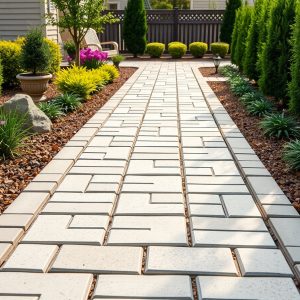
Concrete pavers give a clean look. You can find them in many shapes and sizes. First, level the area and dig a shallow trench. Add a layer of sand. Set the pavers in place and press them down. Use a level to make sure they are even. Fill gaps with sand or fine gravel. These pavers work well for main walkways to doors or patios.
6. Wood Slice Path
This path gives a rustic charm. Cut logs into thick slices. Make sure each slice is dry and flat. Dig out the path area and place the slices in a pattern. Fill the spaces with sand, soil, or mulch. This walkway is best for low-traffic garden spots. Use a wood sealant to help them last longer.
7. Pallet Wood Walkway

Old pallets can become a beautiful path. Take the wood slats apart and remove all nails. Cut them to equal lengths. Lay the boards side by side or in a design. Use gravel or sand underneath to hold them steady. Treat the wood with outdoor sealer. This path gives a casual, crafty look to your garden.
8. Stamped Concrete Path
Stamped concrete looks like stone or brick but costs less. Pour a concrete slab in the walkway space. While it’s still wet, press in a stamp design. Let it dry and then seal it. This walkway needs more tools and care, but the result is neat and smooth. It’s best for paths near your front door or patio.
9. Flagstone Pathway
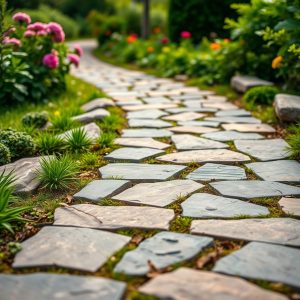
Flagstone paths feel natural and strong. Lay each stone flat on a bed of sand. Fit them close or leave gaps. Use gravel or groundcover in between. Flagstone lasts long and adds beauty. It’s ideal for garden paths or walkways to a backyard seating area.
10. Pebble Mosaic Walkway
Pebble mosaics add art to your yard. Sort pebbles by color or size. Create a design like a swirl or flower. Dig a trench and add a layer of sand. Press pebbles into the sand to make your shape. You can also use mortar to keep them in place. This path takes time but makes your yard stand out.
FAQs
What is the easiest DIY walkway?
Gravel and mulch walkways are the easiest. They need fewer tools and materials.
How deep should I dig for a walkway?
Most walkways need to be 4 to 6 inches deep. This gives room for gravel, sand, or other base layers.
Can I use regular wood for a walkway?
Yes, but it needs to be treated. Use sealants or outdoor-grade wood to stop rot.
Do I need a border for a walkway?
Borders help keep materials in place. They also make the path look neat.
How can I stop weeds from growing in my path?
Use landscape fabric under your path. You can also fill gaps with sand or seal them.
Conclusion
A walkway adds beauty and order to your yard. Each DIY idea has its own charm. Gravel, bricks, stones, and wood all give a different look. Choose the one that fits your space and style. You don’t need to be an expert. Just plan, gather your tools, and take your time. These paths help you enjoy your garden more. And they give every step a purpose.
